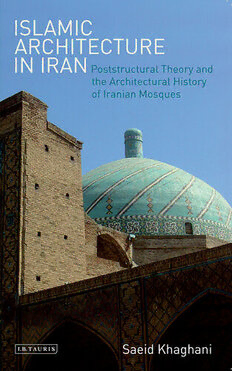
Islamic Architecture in Iran: Poststructural Theory and the Architectural History of Iranian Mosques PDF
02012·1.624 MB·English
Most books are stored in the elastic cloud where traffic is expensive. For this reason, we have a limit on daily download.
Preview Islamic Architecture in Iran: Poststructural Theory and the Architectural History of Iranian Mosques
Description:
The architecture of the Islamic world is predominantly considered in terms of a dual division between 'tradition' and 'modernity' - a division which, Saeid Khaghani here argues, has shaped and limited the narrative applied to this architecture. Khaghani introduces and reconsiders the mosques of eighth- to fifteenth-century Iran in terms of poststructural theory and developments in historiography in order to develop a brand new dialectical framework. Using the examples of mosques such as the Friday Mosques in Isfahan and Yazd as well as the Imam mosque in Isfahan, Khaghani presents a new way of thinking about and discussing Islamic architecture, making this valuable reading for all interested in the study of the art, architecture and material culture of the Islamic world.
See more
The list of books you might like
Most books are stored in the elastic cloud where traffic is expensive. For this reason, we have a limit on daily download.
